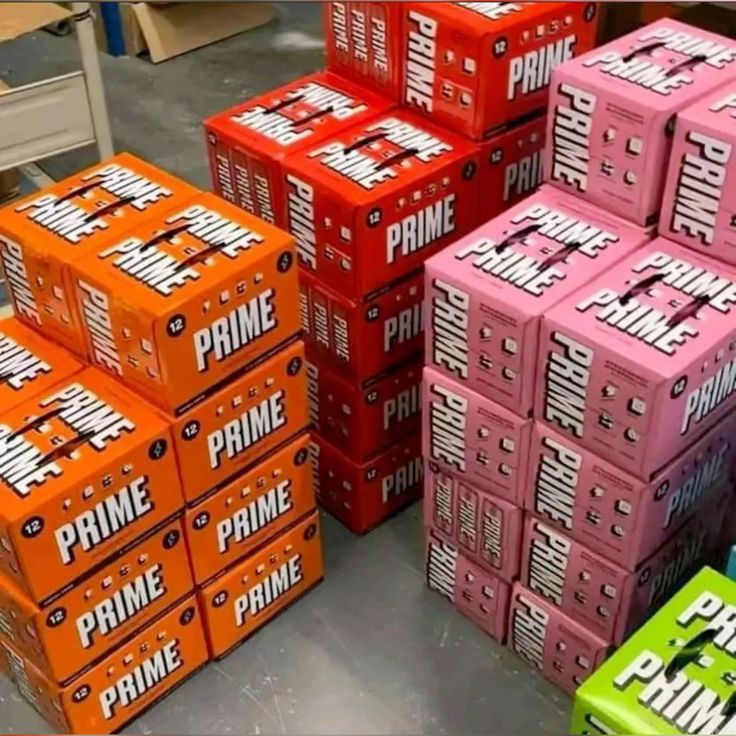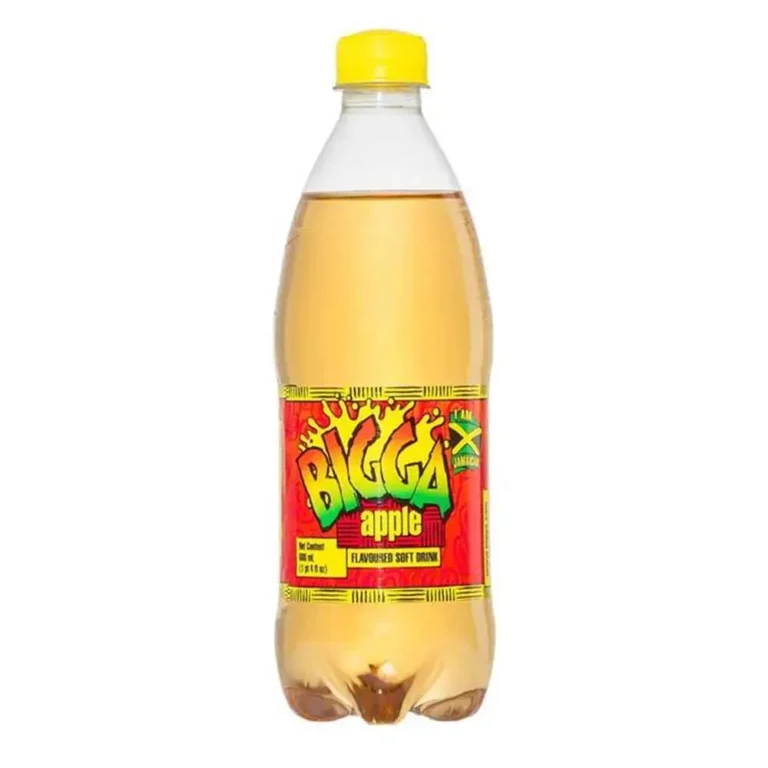Description
Introduction
In today’s fast-paced world, energy drinks are everywhere — but the rise of the bran and Prime Energy Drink (and its variants) has created quite a buzz globally. Co-founded by social media personalities Logan Paul and KSI, this product aims to blend energy, flavour, lifestyle and performance. In this article we’ll explore what PRIME Energy Drink is, examine its specifications, review its benefits and consider the global implications and concerns.
What is PRIME Energy Drink?
PRIME is a beverage brand that spans several categories — hydration drinks, powders, and energy drinks. The energy drink version focuses on delivering a high-caffeine, low-sugar formula designed for alertness and performance.
Although PRIME’s broader brand includes hydration drinks (caffeine-free) and other options, when we refer to “PRIME Energy Drink” we mean the high-stimulant variant with caffeine and other actives.
Specifications & Composition
Let’s break down the key specifications of the energy drink version of PRIME.
1. Serving size & presentation
-
Typical can size: ~12 oz (approximately 330 ml) in many markets.
-
Slim aluminium can design, various flavour labels.
2. Caffeine content
-
Each can of PRIME Energy contains approximately 200 mg of caffeine.
-
To contextualize: this is roughly equivalent to two cups of brewed coffee, and significantly higher than some older energy-drinks.
-
Because of this, PRIME Energy is not marketed for children, pregnant or breastfeeding women, or caffeine-sensitive individuals.
3. Calories, sugar & sweeteners
-
Calories are very low: around 10 kcal per can in some markets for the energy version.
-
No added sugar; uses artificial sweeteners such as sucralose and acesulfame potassium.
-
Carbohydrates are minimal (around 1-4 g depending on variant) and sugars 0 g.
4. Electrolytes, vitamins & amino acids
-
Includes added B-vitamins (notably B6, B12) for energy metabolism.
-
Electrolytes such as sodium, potassium, magnesium are included in some markets to support hydration/muscle function. For example: sodium ~55 mg, potassium ~700 mg in one specification.
-
Some versions note inclusion of amino acids such as branched-chain amino acids (BCAAs) and/or taurine and L-theanine.
5. Flavour variety & market versions
-
PRIME Energy comes in a variety of flavours: Original, Ice Pop, Strawberry Watermelon, Blue Raspberry, Tropical Punch, Orange Mango, Lemon Lime, etc.
-
Regional variants may differ slightly (caffeine limits, electrolyte formulations) depending on local regulations. Wikipedia
6. Other attributes
-
Vegan-friendly and gluten-free in many markets.
-
Packaging claims: “zero sugar”, “low calorie”, “clean energy”.
Benefits of PRIME Energy Drink
Here are some of the purported benefits of PRIME Energy Drink — followed by some caveats in a separate section.
1. Boosted alertness & cognitive performance
With 200 mg caffeine per can, PRIME provides a strong stimulant effect: improved alertness, focus, less fatigue. Many users consume energy drinks to help with late-night work, studying, gaming, or workouts — PRIME positions itself accordingly.
Caffeine also enhances mental performance in many individuals when used moderately.
2. Low sugar and low caloric load
Compared to many sugary soft drinks or standard energy drinks laden with sugar, PRIME’s zero-added sugar and low calories make it an option for those who want stimulant effect with minimal calorie load. This is especially helpful for consumers tracking macros or trying to limit sugar.
3. Electrolytes and vitamins support
Although primarily an “energy” drink rather than purely hydration, the inclusion of electrolytes (e.g., potassium, sodium, magnesium) means that in theory it can support hydration status and muscle or nerve function. The B-vitamins play a role in converting nutrients to energy and supporting nervous system health.
These blend of ingredients may make it more than just “caffeine + flavour”.
4. Flavour experience and lifestyle appeal
PRIME has been widely marketed, has strong pop-culture appeal, and the flavour variants are many; for enthusiasts, this adds the benefit of taste and novelty. The brand identity (influencers, social media) adds appeal which for many is part of the “benefit”.
5. Versatility of use
Because it is low in sugar and calories, PRIME can be used in different scenarios — pre-workout, study sessions, travel, alertness when needed. For someone who doesn’t want a sugar crash, a sugar-free high-caffeine drink can be useful.
Considerations & Caveats (Worldwide)
While there are benefits, it’s important to highlight the considerations and potential risks associated with PRIME Energy Drink — especially in a global context.
1. High caffeine content and suitability
-
The 200 mg caffeine per can is substantial. For sensitive individuals, this can lead to jitteriness, anxiety, elevated heart rate, insomnia.
-
Regulatory bodies in some countries have flagged that level of caffeine as too high for minors or certain groups.
-
Children, pregnant or breastfeeding women, or people with heart conditions are advised to avoid high-caffeine drinks.
2. Marketing & target demographic concerns
-
Because PRIME is strongly associated with influencers and youth culture, there’s concern the high-caffeine product may appeal to minors despite age-warnings.
-
In some countries, energy drinks such as PRIME have faced regulatory scrutiny or bans for being targeted at younger demographics. Wikipedia
3. Electrolyte levels and hydration claims
-
While PRIME includes electrolytes, some experts argue that for heavy exercise or sweat loss the sodium levels are relatively low compared to traditional sports-drinks.
-
PRIME is primarily an energy/stimulus beverage — hydration needs may not be fully met by it alone.
4. Use of artificial sweeteners and additives
-
PRIME uses artificial sweeteners like sucralose and acesulfame potassium. While approved, some individuals may prefer avoiding these.
-
Some sources point out that although calorie-free, the “energy” is stimulant-based (caffeine), not caloric energy (food) — so the effect may differ.
5. Global regulation & availability
-
Due to caffeine limits or labelling rules, PRIME Energy is restricted or banned in certain regions (e.g., in New Zealand originally).
-
Variants differ between regions: strength, packaging, flavour may vary—so the specification you buy may differ from the US version.
Global Reach & Market Presence
PRIME’s global footprint is notable: from North America to Europe, Australia and beyond. Let’s consider some of the global implications.
1. Popular culture & influencer marketing
PRIME’s brand growth has been turbo-charged by celebrity/influencer backing (Logan Paul, KSI) and social media. This helps propel awareness worldwide beyond typical energy drink channels.
This gives the product a lifestyle appeal that resonates globally with younger consumers.
2. Regulatory differences across markets
Regulations on caffeine content, labelling, age-restriction differ widely. For example:
-
In the UK & Europe: PRIME launched with high uptake; however, caffeine restrictions and label translation issues have arisen.
-
In Australia/New Zealand: original version exceeded legal caffeine limits; modifications or bans resulted.
Therefore, consumers in different countries may receive slightly different product versions (caffeine content, label warnings, flavour availability).
3. Flavour variants tailored to regions
The wide flavour range helps global appeal. For example, “Strawberry Watermelon”, “Ice Pop”, “Blue Raspberry” are globally available, but local tastes might differ.
Thus the brand adapts to diverse markets both in flavour and messaging.
4. Distribution & accessibility
Growing availability in retail, online, convenience stores globally means the product is increasingly accessible — though in some regions it may be more expensive or harder to find.
As availability expands, so do market awareness and uptake.
5. Cultural & health implications
As a global product, PRIME’s high caffeine profile raises public-health discussion in many countries about youth consumption, marketing practices, and regulatory oversight. Local consumer education is critical.
Who Might Benefit from PRIME Energy Drink?
Given its specifications and benefits, here are consumer profiles for whom PRIME may make sense — and for whom it may be less appropriate.
Good fit for:
-
Adults seeking a strong caffeine boost without sugar or many calories.
-
People looking for a convenient “alertness” drink in study, travel, work, or light-workout contexts.
-
Consumers who want flavour variety along with performance-oriented branding and are comfortable with artificial sweeteners.
-
Vegan, gluten-free individuals (depending on regional packaging) who want an energy drink aligned with those needs.
Less appropriate or require caution:
-
Children, teenagers, pregnant or breastfeeding women (due to high caffeine).
-
People sensitive to caffeine, stimulants, or those with cardiovascular conditions.
-
Athletes engaged in heavy endurance or sweat-loss events who may require higher sodium electrolyte formulations.
-
Individuals who prefer natural sweeteners or minimal artificial additives.
Practical Tips for Using PRIME Energy Drink
If you are considering using PRIME Energy Drink, here are some practical tips to maximise benefits and minimise risks:
-
Check the label — because caffeine and electrolyte amounts may vary by region.
-
Limit caffeine intake — many health authorities suggest up to ~400 mg caffeine/day for healthy adults; consuming more may increase risks.
Since one can is ~200 mg, that leaves limited room for other caffeine sources (coffee, tea, other energy drinks). -
Use it strategically — rather than as all-day hydration. Use prior to a focused activity (study, work, gym) rather than mindless consumption.
-
Stay hydrated with water — energy drinks are not a complete substitute for water, especially in hot/humid or high-sweat conditions.
-
Avoid use close to bedtime — caffeine can disrupt sleep, and lack of sleep undermines performance & health.
-
Know your boundaries — if you’re new to high-caffeine drinks, start with half a can and gauge tolerance.
-
Use in moderation — even though calories are low, repeated high-caffeine can lead to tolerance, dependence, or side-effects.
-
Be mindful of local regulation — if you’re travelling, the product variant may differ (caffeine limits, formulation) — check local rules and packaging.
Verdict: Is PRIME Energy Drink Worth It?
Overall, PRIME Energy Drink offers a strong, low-sugar, high-caffeine option with flavour variety and modern branding. For an adult looking for a potent energy boost with minimal sugar and calories, it delivers. The added vitamins and electrolytes are nice extras — though they should not be seen as a substitute for balanced nutrition or proper hydration.
That said, the product is not without risks. The high caffeine content means it must be used responsibly; it is not a health drink in the sense of being benign for all consumers or all contexts. Marketing allure and influencer backing may make it appealing, but the underlying physiology (stimulant effect) remains something to respect.
In global markets the variant differences, regulatory issues and cultural concerns (particularly around youth consumption) add complexity. If you purchase it, do so consciously, read the label, and understand how it fits into your overall diet, lifestyle and caffeine-intake.
Conclusion
The rise of PRIME Energy Drink reflects several trends: the demand for sugar-free energy, influencer-driven lifestyle branding, and flavour-diversity in beverages. Its specifications (200 mg caffeine, zero sugar, low calories, added vitamins/electrolytes) make it a notable option in the energy-drink space.
However, as with all products of this nature, benefits come with caveats. It’s not a “free lunch” — the stimulus comes from caffeine, and hydration/energy work still requires water, food, rest and balanced nutrition.
If used sensibly by an adult aware of caffeine limits and hydration needs, PRIME Energy Drink can be part of a modern, active lifestyle. Just remember: it’s one tool in your toolkit — not a substitute for sleep, diet, or real recovery.






Reviews
There are no reviews yet.